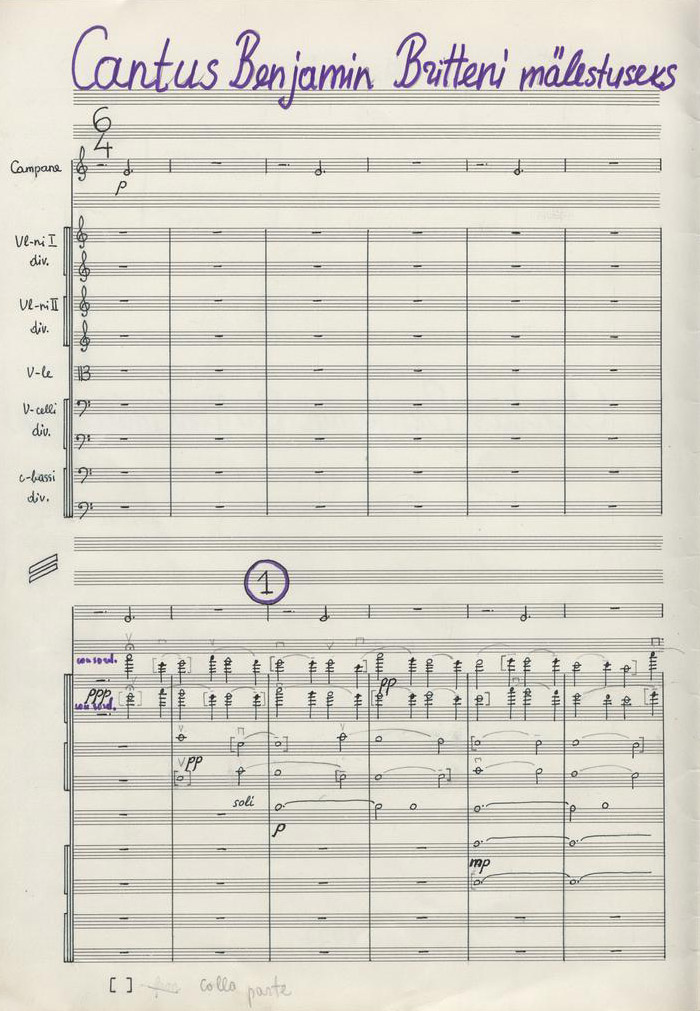Scored for
string orchestra and bell
Duration
6 min
Short description
On 5 December 1976, Arvo Pärt heard on the radio of Benjamin Britten’s death and was deeply affected by the news. The composer has said: "I had just discovered Britten for myself. Just before his death I began to appreciate the unusual purity of his music – I had had the impression of the same kind of purity in the ballads of Guillaume de Machaut. And besides, for a long time I had wanted to meet Britten personally – and now it would not come to that." (Wolfgang Sandner, CD note Arvo Pärt. Tabula Rasa, ECM New Series, 1984).
Pärt was finishing an elegiac orchestra piece at the time, which he decided to dedicate to the memory of his deceased colleague, out of respect and admiration for his work.
Cantus begins w…

Staatsorchester Stuttgart, Dennis Russell Davies (conductor). CD Tabula Rasa. ECM New Series 1275
© ECM Records
World premiere
07.04.1977
Estonia Concert Hall, Tallinn, Estonia
Concert: The symphonies of D. Shostakovich
Estonian National Symphony Orchestra (ERSO) , Eri Klas (conductor)

